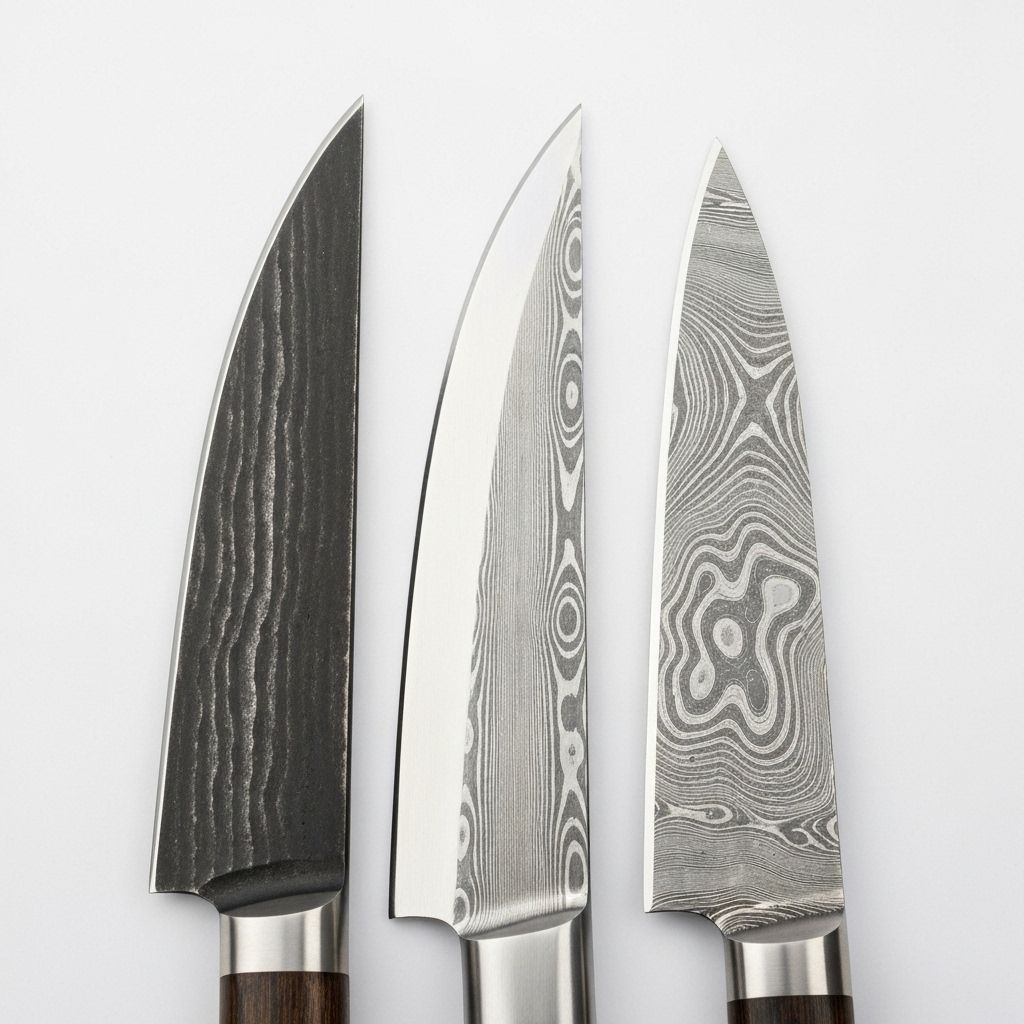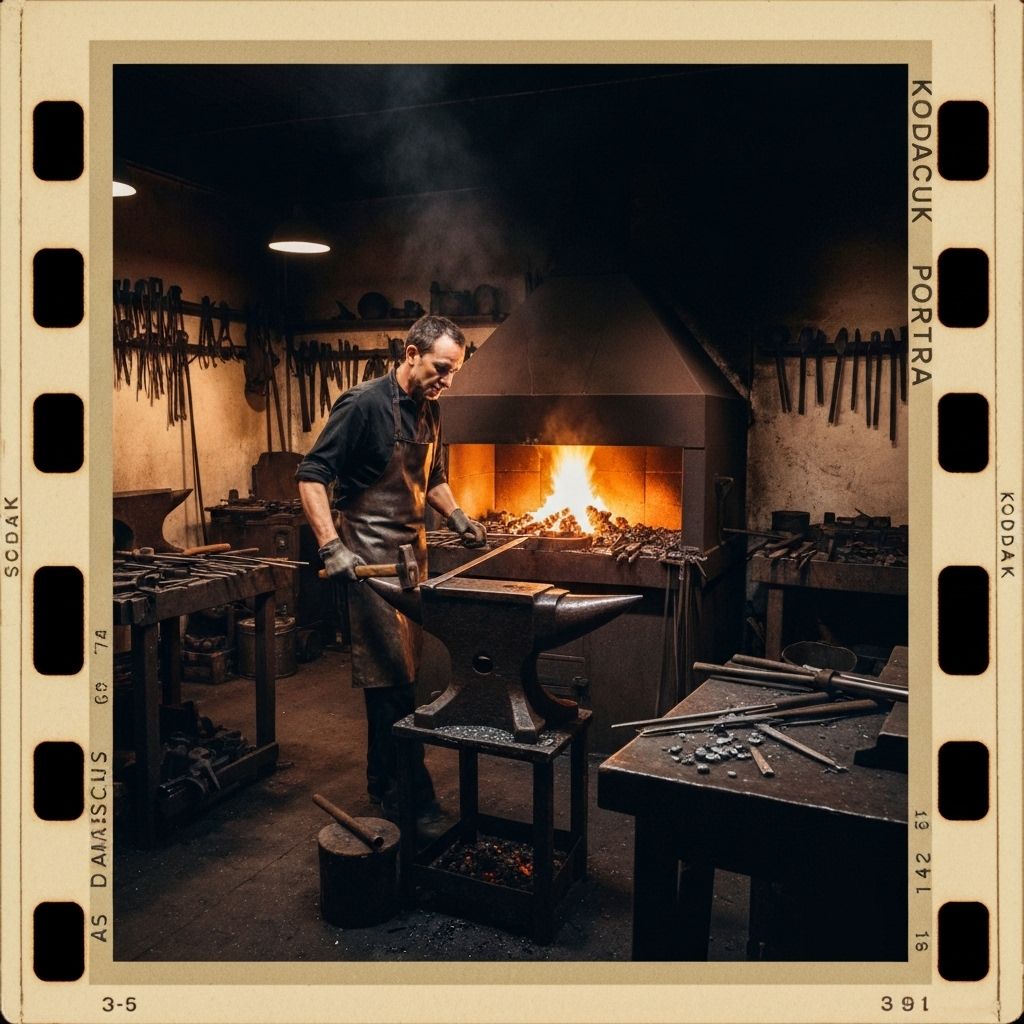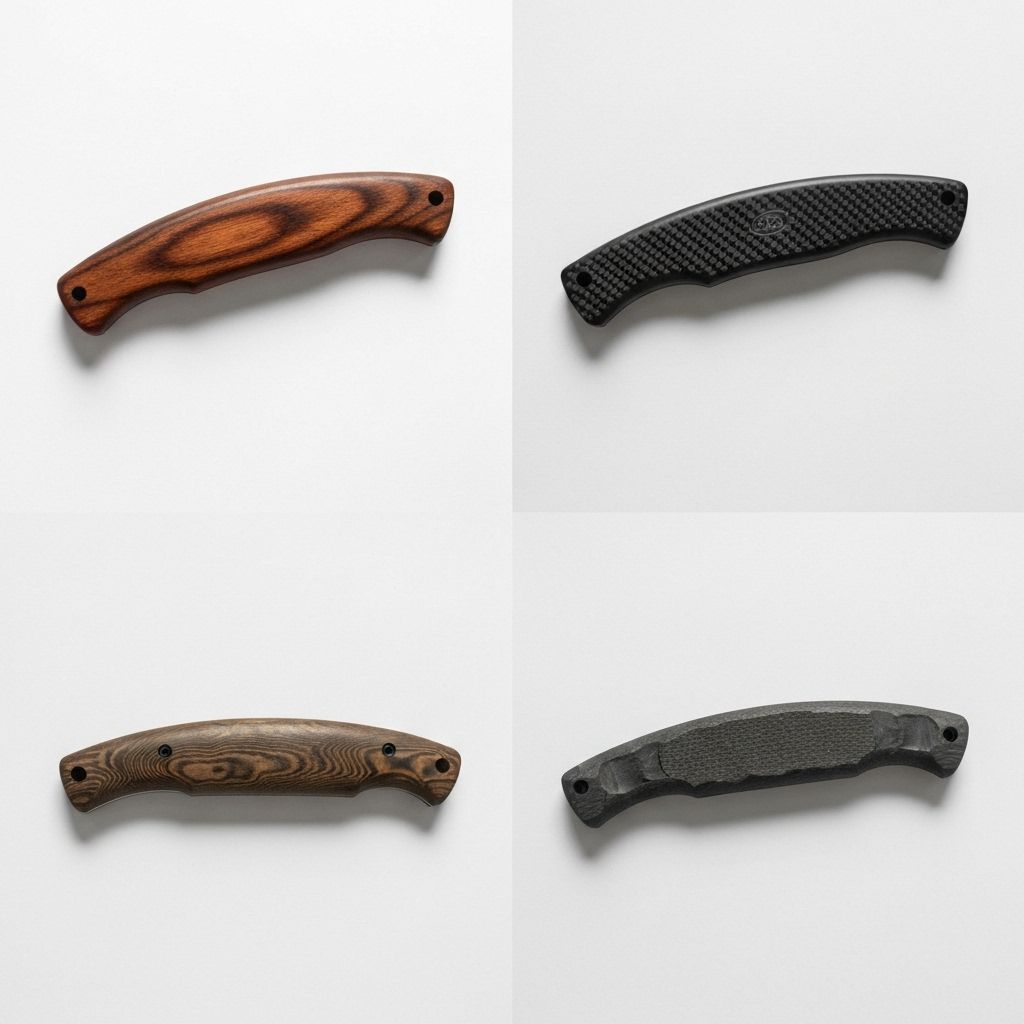Understanding Knife Steel: Carbon, Stainless, and Damascus Explained
Decode the properties of different knife steels to match blade performance with your maintenance preferences and cutting needs.
- Answer the main question in one sentence.
- Give the best pick and why in one line.
- Link to the product or guide for next step.

Steel selection determines a knife's performance characteristics more than any other factor. Understanding the properties and trade-offs of carbon, stainless, and Damascus steels enables informed decisions based on your priorities and maintenance commitment.
Carbon steel represents the traditional choice for serious cutlery. High carbon content (typically 0.6-1.5%) creates steel that accepts extremely sharp edges and maintains them through heavy use. The crystalline structure allows precise sharpening with basic tools, making field maintenance practical. Professional butchers and hunters often prefer carbon steel for these qualities.
The primary disadvantage is corrosion susceptibility. Carbon steel requires immediate cleaning and drying after use, plus regular oiling to prevent rust. Acidic foods like tomatoes or citrus can discolor the blade, though this patina actually provides some corrosion protection. For users willing to provide proper care, carbon steel offers unmatched performance.
Stainless steel adds chromium (minimum 10.5%) to resist corrosion. This convenience comes with trade-offs: stainless steels typically don't achieve the same edge sharpness as carbon steel, and they're more difficult to sharpen. However, modern stainless formulations like VG-10 or S30V narrow this performance gap significantly.
The "stainless" designation means rust-resistant, not rust-proof. Prolonged exposure to moisture or salt can still cause corrosion, though stainless steel tolerates neglect far better than carbon steel. For kitchen knives that may sit wet in sinks or outdoor knives exposed to marine environments, stainless steel's corrosion resistance proves invaluable.
Damascus steel combines multiple steel types through repeated folding and forging. This creates the distinctive wavy patterns that make Damascus blades visually striking. Beyond aesthetics, the layered construction can combine the best properties of different steels—carbon steel cores for edge performance, stainless outer layers for corrosion resistance.
Quality varies dramatically in Damascus steel. Authentic pattern-welded Damascus requires skilled craftsmanship and quality materials. Cheap Damascus knives may use acid etching to simulate patterns on homogeneous steel, providing no performance benefits. Reputable makers specify the steel types and layer counts in their Damascus construction.
Hardness, measured on the Rockwell C scale (HRC), indicates a steel's resistance to deformation. Kitchen knives typically range from 56-62 HRC. Lower hardness (56-58 HRC) means easier sharpening but more frequent maintenance. Higher hardness (60-62 HRC) maintains edges longer but requires quality sharpening stones and proper technique.
Edge retention and toughness exist in tension. Harder steels hold edges longer but become more brittle, increasing chip risk. Softer steels resist chipping but dull faster. Your use case determines the optimal balance—delicate slicing favors hardness, while heavy chopping benefits from toughness.
// RELATED_ARTICLES

The Art of Damascus Steel: Ancient Techniques Meet Modern Precision
Explore the centuries-old process of creating Damascus steel and how we've refined it for contemporary culinary applications.

Handle Materials: Engineering Ergonomics and Durability
Explore the material science behind knife handles and how different materials affect performance and longevity.